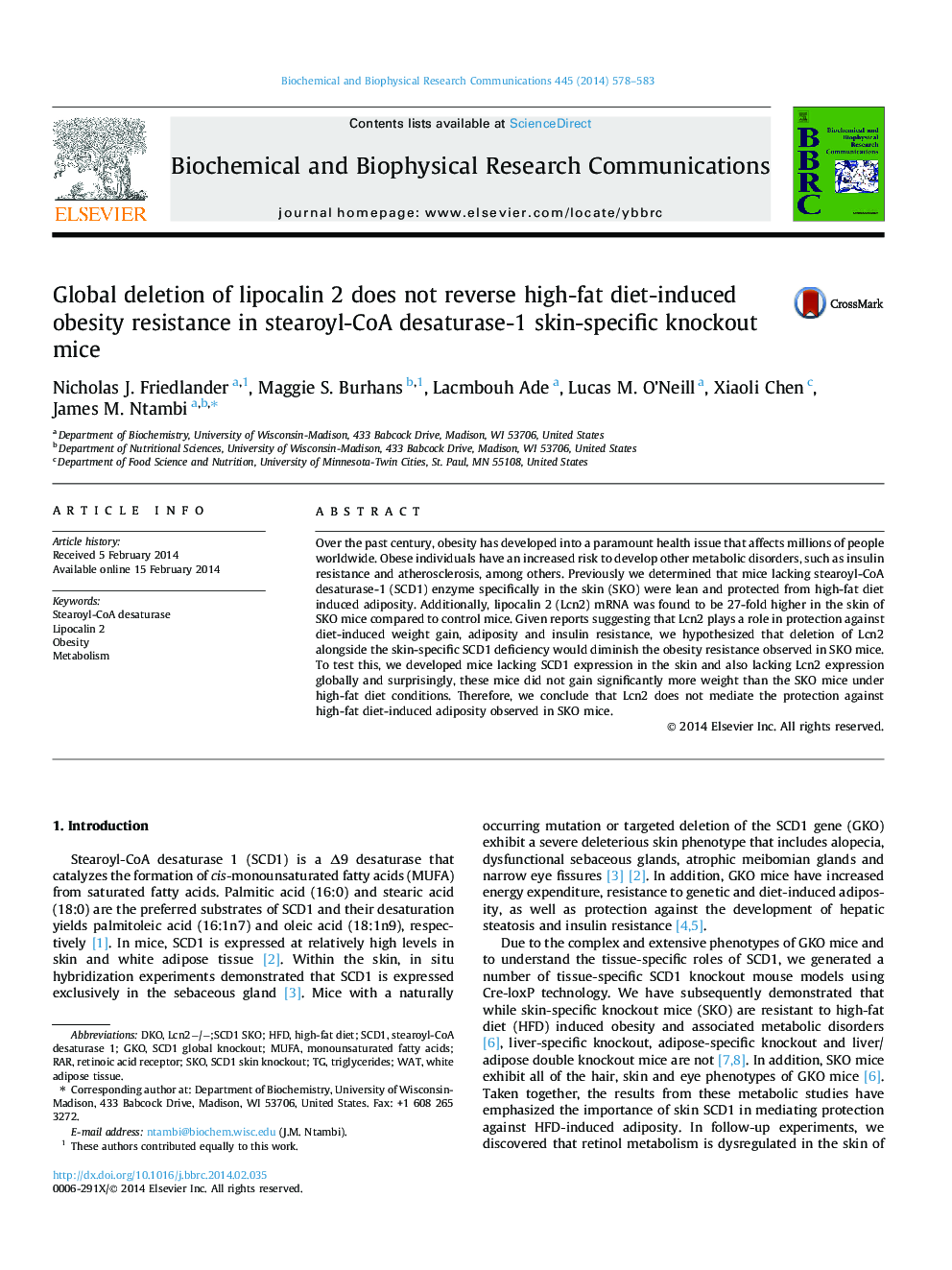| Article ID | Journal | Published Year | Pages | File Type |
|---|---|---|---|---|
| 1928552 | Biochemical and Biophysical Research Communications | 2014 | 6 Pages |
•SCD1 skin knockout mice are resistant to high fat diet-induced obesity.•Lcn2 protein expression is elevated in skin and liver of SCD1 skin knockout mice.•Lcn2 deletion in SCD1 skin knockout mice does not reverse obesity resistance.•Lcn2 deletion in SCD1 skin knockout mice does not increase liver triglycerides.
Over the past century, obesity has developed into a paramount health issue that affects millions of people worldwide. Obese individuals have an increased risk to develop other metabolic disorders, such as insulin resistance and atherosclerosis, among others. Previously we determined that mice lacking stearoyl-CoA desaturase-1 (SCD1) enzyme specifically in the skin (SKO) were lean and protected from high-fat diet induced adiposity. Additionally, lipocalin 2 (Lcn2) mRNA was found to be 27-fold higher in the skin of SKO mice compared to control mice. Given reports suggesting that Lcn2 plays a role in protection against diet-induced weight gain, adiposity and insulin resistance, we hypothesized that deletion of Lcn2 alongside the skin-specific SCD1 deficiency would diminish the obesity resistance observed in SKO mice. To test this, we developed mice lacking SCD1 expression in the skin and also lacking Lcn2 expression globally and surprisingly, these mice did not gain significantly more weight than the SKO mice under high-fat diet conditions. Therefore, we conclude that Lcn2 does not mediate the protection against high-fat diet-induced adiposity observed in SKO mice.
